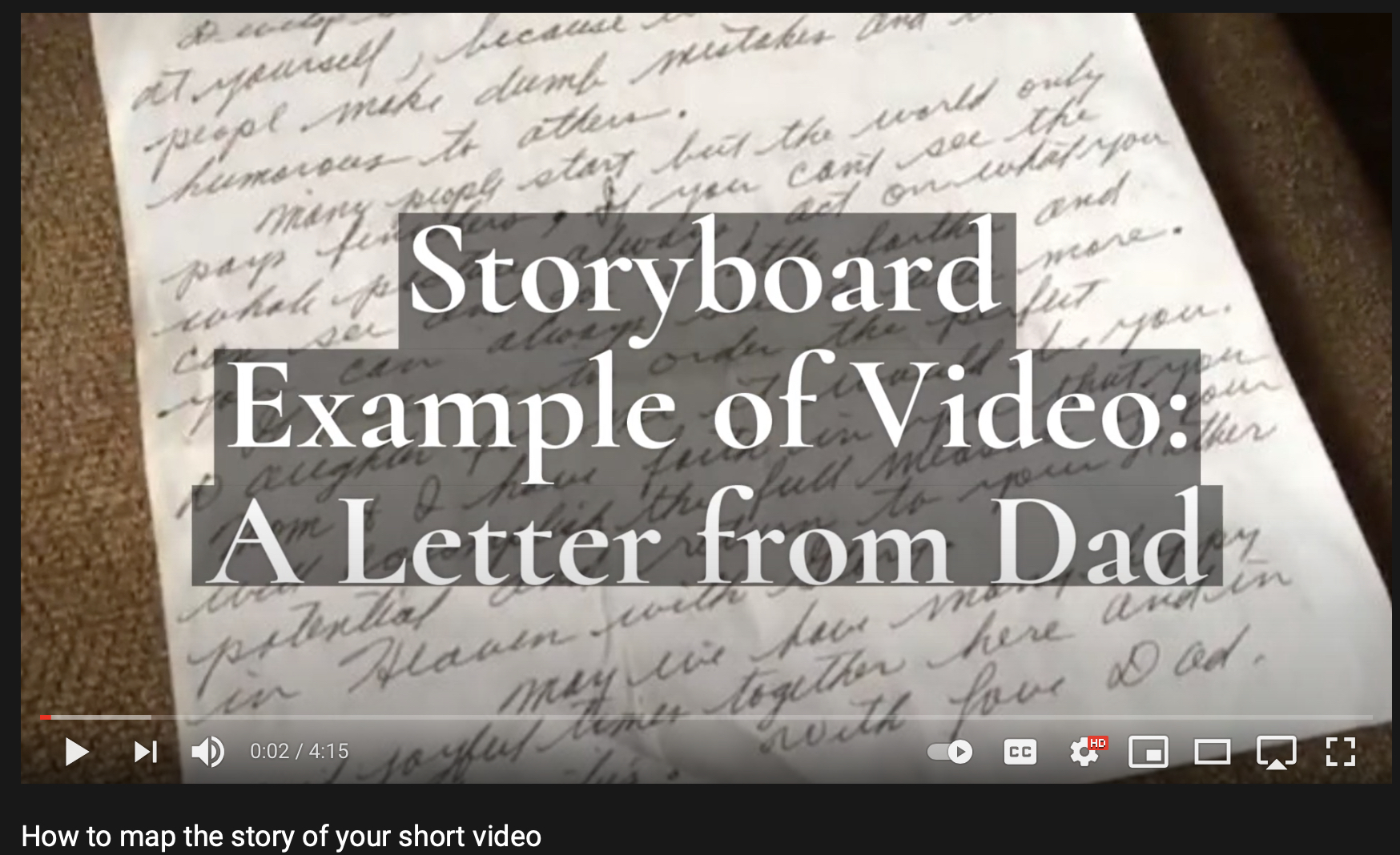
This article explains the basics of story structure using The Sound of Music as the main example, followed by a short personal example, and ending with the children’s classic The Very Hungry Caterpillar. These three examples show how the same elements of story structure can apply to true tales (e.g., memoir), fiction, videos and short stories. Regardless of your story’s length or tone, you can strengthen its spine by zeroing in on these ideas.
If this sounds too formulaic to you, feel free to let inspiration guide your first draft. Then, when you delve into editing you can compare what you’ve written against classic structure points to give you ideas. I have found that learning the storyboard structure helps me know what to look for, especially in my genre of true-life stories. In this realm, the process is always one of discovery rather than inventing plot. The storyboard always inspires me.
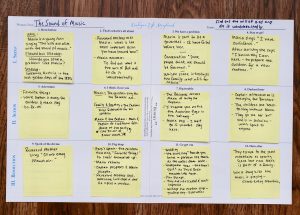
The first part of this article outlines terminology and the basics of story structure and part two walks through some storyboard examples.
Before we get too far, I do want to let you know that I have two resources beyond this article. The first is a writer’s tool kit – it’s free. Get it here.
I have also have designed an online course to walk you through storyboarding, the building blocks of writing, and story structure. It comes bundled with two bonus courses on how to do oral history and on writing sensitive subjects. Click here to preview.
Disclaimer: This article contains affiliate links so if you purchase one of the books mentioned in this article, we make a small commission on Amazon. We really appreciate it!
Who:
Every story is about someone, called a hero or protagonist. It might be about more than one person, but usually it features one character above the others. If you’re not sure which character is the main one, ask yourself this question: Who changes the most from the beginning to the end? This is your hero.
Hero/main character/protagonist:
Some people bristle at the idea of referring to themselves as a “hero” if it is a personal story. Others light up when they realize that they get to be the hero in their own story of growth and change. I like the term “hero” because it hails to the classic Hero’s Journey as first introduced in the seminal work by Joseph Campbell in Hero with a Thousand Faces and later outgrowths, like Blake Snyder’s Save the Cat for screenwriters. Many of my favorite writers on writing like Steven Pressfield (who wrote The War of Art and The Legend of Bagger Vance) use the “hero’s journey” framework to apply to both fiction and true life. Anyway, it’s your story and you can call your protagonist whatever you like. 🙂 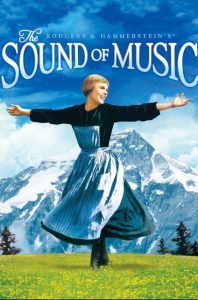
What:
Every story is about something, or a theme. This is not the plot or what happens in the story. This is what your story is really about–its message or main point. I write the theme at the top of my storyboard or outline so I never forget. If I can’t explain this in a few words, then there’s usually a problem with my thinking. Many movies, novels or biographies have more than one theme. For example, in The Sound of Music there are multiple themes: The will of God, the power of music, the love of country, and what it means to be part of a family. The over-arching theme, however, is stated by Maria right up front: Carrying out the will of God.
Regarding theme, ask yourself this question:
What do have to say that is so important I am investing all this time writing it?
Why THIS story? When you answer that clearly and succinctly, you’ll know what your theme is.
Related article: What is the theme in writing your story?
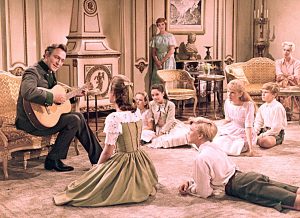
How:
Here is a rule of storytelling I hope you never forget: Every great story is about transformation. The whole reason we want to go on this journey is to see what your character learns about life and by proxy can teach us. We want to see how a flawed human can change by experiencing the school of hard knocks because it gives us faith that we can too.
I love how Blake Snyder, author of Save the Cat suggests that you start with a character who has as many problems as possible that need fixing. As a note of respect and credit, Snyder’s books taught me to map stories using the Hollywood beat sheet method and my simplified storyboard is inspired by his groundbreaking work. Anyway, Snyder says that when your hero has a lot of growing to do, it’s more satisfying at the end to see just how far he/she has come. That growth is called “arc,” and you can think of it like the flight of an arrow.
Snyder says, “By taking (your hero) back as far as possible, by drawing the bow back to its very quivering end point, the flight of the arrow is its strongest, longest and best.”
Read related article: Is yours a redemption story?
Central conflict/central problem:
Every story needs a central problem or a central conflict. This gives your hero a goal. No problem, no story. Otherwise, all you have is a news report or pages where nothing much happens. That’s boring. Remember: Problems turn pages. Some people say the problem can be internal or external, but I argue that it should be both. The external conflict is the hero’s goal, problem to solve, race to win, forces of nature to battle, or bad guys to defeat. Internal conflict is what the hero is struggling with on the inside: doubt, resistance, and the need to change. External conflict is what the hero wants while internal conflict is all about what the hero needs. 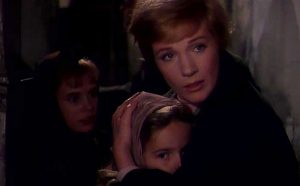
Love interest:
Your story might not have a romantic love interest, but there may be some other types of relationship that makes sparks fly. If not, what about passion for a cause, family, or place? Something should light your hero’s fire. If this is romantic in nature or relates to an important friendship, the love interest may carry a deeper symbolic meaning related to the hero’s spiritual journey. The love interest holds up a mirror to our hero and inspires him/her to change.
Emotional shift:
The most satisfying stories strike emotional notes that we can all relate to and that keep us on our toes from scene to scene. They are funny in the middle of being sad or romantic in the middle of an adventure sequence. If a scene ends on a high note, the very next scene shifts to danger or loss. Mix it up to keep the pace clipping along.
Three act structure:
Classic story structure unfolds in three acts which I call: setup, action and resolution. You might think of this as “beginning, middle and end.” I will be really brief here about what is supposed to happen in each beat because I go through the structure in more detail in the second half of this article. Read related article, How to Storyboard.I also wrote a short, full-color workbook that walks through each beat in more detail and is meant to be used with pretty poster templates and sticky notes.
Related article: Writing a book template and checklist for a beautiful interior layout
You can also get my storyboard workbook and template on Amazon by clicking here.
Printable Storyboard Template

Storyboard any book, memoir, biography, or family history tale with our free printable template. It just might save your story.
Story Structure for the Sound of Music
Now, let’s do some storyboarding together using the Sound of Music. I chose this example because it is a well-known movie/musical and also because it is based on a true story, which is the writing world where I live.
But first, don’t stress!
Before delving more into the storyboard for The Sound of Music, know that this process is meant to feel light and fun. I use the storyboard for long and short stories alike, but not always at the beginning of writing. Very often, I will write a first draft in free-form style and let it surprise me with twists and turns. Creativity is a discovery process, not forced. Once I have a feel for a whole story then I will pull out the storyboard and look for weak spots and meandering themes.
Also, I’m not rigid about what needs to go where. Sometimes beats will be shorter or longer, or maybe missing altogether. Maybe they are out of order. In other words, there is a time to let ‘er rip in your writing, and there is a time to analyze–later.
Next, if you are not familiar with my storyboard method you might want to read: this introductory article on how to storyboard. It covers an overview of what to look for in each beat.
Oh, and by the way, here is my sticky note storyboard for the movie.

Lastly, before we begin, if you would like to refresh your memory, click here for a plot summary/synopsis of The Sound of Music.
Act I. “Setup”
Beat 1. Hero before
Maria is a young nun singing “The hills are alive with the sound of music.” She is free spirited and joyful here in the alpine air she loves. We like this girl right away. Remember this opening scene because it bookends perfectly as a mirror opposite of the closing scene, a technique that is very satisfying. Read related article about story endings. The setting is Salzburg, Austria in the last golden days of the 1930s. 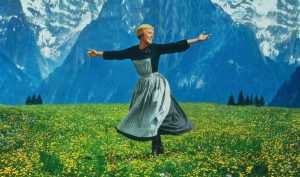
Beat 2. That’s what it’s all about
We are introduced to the theme when the Reverend Mother calls Maria in to tell her she is being reassigned from the convent. Before breaking the news, however, she asks Maria what the most important lesson she has learned here.
Maria responds, “To find out what is the will of God and to do it wholeheartedly.”
This is a textbook example of introducing the over-arching theme through dialogue. It is right on schedule in beat 2. When you know what you’re looking for, it seems really on-the-nose to have Maria state it so obviously, but that’s the beauty of dialogue; it feels natural. As mentioned above, there are other themes in this story, including the power of music, love of country, and becoming a family. But they all fit under this “will of God” umbrella. 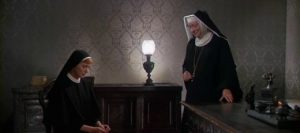
Beat 3. We have a problem
The “How do you solve a problem like Maria?” number is a terrific example of spelling out a character’s flaws for the audience. Maria thinks everything is fine, but she does not fit within the conforming walls of the convent. This is why she is being reassigned as a governess in the Von Trapp family. There’s just one more problem: twelve governesses have failed before her. She accepts the new assignment anyway and as she walks she sings, I have confidence as a little pep talk to herself. When she arrives, we meet the Captain and the other Von Trapp family and the whistle scene ensues. Watch out…opposites attract. Now we have a tangible goal: How will Maria meet the challenge of succeeding in her new duties? 
Beat 4. Stay or go?
The children play tricks on her and at dinner she must make a choice: Rat them out or try to make it work? She takes the high road. When Liesl sneaks in through Maria’s window, Maria chooses to be a friend rather than tattle. After learning that the Captain is courting the Baroness, Maria prays for the children saying: I know why I am here – to prepare the children for a new mother. In my mind, this is the moment that seals the deal: Maria is all in.
Act II. “Action”
Beat 5. Adventure
The Von Trapp family adventure begins in the very next moment when the children tiptoe into her room during a thunderstorm and Maria sings These are a few of my favorite things in their pajamas. This is not the world as everyone knew it the day before; life is now turned on its head. The world turned topsy turvy is the crux of Act II. 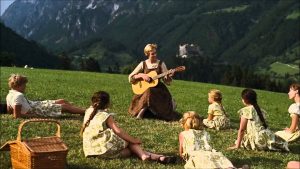 While the Captain is away, Maria and the Von Trapp children play. In any movie the adventure beat will include scenes that show our cast of characters exploring their new world, practicing their new powers (singing Do Re Mi) and getting to know each other. In a superhero movie there will be new uniforms and here Maria sews play clothes from curtains. They picnic in the hills and Maria lets them climb trees. They all enjoy a taste of freedom…until the Captain comes home and they fall into the lake. He is not amused and says Maria must leave.
While the Captain is away, Maria and the Von Trapp children play. In any movie the adventure beat will include scenes that show our cast of characters exploring their new world, practicing their new powers (singing Do Re Mi) and getting to know each other. In a superhero movie there will be new uniforms and here Maria sews play clothes from curtains. They picnic in the hills and Maria lets them climb trees. They all enjoy a taste of freedom…until the Captain comes home and they fall into the lake. He is not amused and says Maria must leave.
Beat 6. I think I love you
This is a movie of multiple loves (music, country, family, Captain + Maria) and they all come together in the next two scenes. The children sing for the Baroness and she is impressed, so the Captain forgives Maria. He accepts the invitation to play guitar and sings Edelweiss, expressing love for his homeland. When his children join in it is the first time we see tenderness toward his children and they really seem like a family here. 
Betwixt
The next scene is another classic example of hitting the beats right on time. The Von Trapps throw a party for the Baroness. It is common at the halfway point to have some sort of public debut and here the Von Trap children sing publicly for the first time. Maria then teaches the children a traditional Austrian folk dance in the courtyard and the Captain dances with her. It’s so fitting with the love of country theme that it’s a folk song. We see that the two are flushed with feelings for each other. And guess what? This moment clocks at 1 hour 31 minutes in a movie that is just shy of 3 hours. Here is our “kiss the girl moment” at the halfway mark (without a literal kiss). The stakes are raised when the Baroness notices.
Beat 7. Big trouble
Maria’s nemesis, the Baroness, calls her out for loving the Captain and Maria is blindsided. She says, “I must go. I shouldn’t stay here.” Meanwhile there are politics afoot in the household and someone says, “I suppose you notice the Austrian flags in the hallway.” The real bad guys are closing in.
8. Darkest hour
Maria rushes away leaving only a cryptic note. The Captain announces he is marrying the Baroness and the children are polite but depressed. They decide to go see Maria, but she is in seclusion not speaking to anyone. They leave in despair.
III. Resolution
Beat 9. Spark of the divine
The Reverend Mother sings Climb Every Mountain to Maria, filling her with hope.
Beat 10. Dig deep
This a good time for our hero to give an inspiring speech and this time it comes from the children in the form of a song. They sing Favorite Things to lift their spirits as Maria has taught them to do. In the middle, Maria comes back. The Baroness leaves, the Captain proposes, and Maria accepts. Maria quotes the Reverend Mother, “When the Lord closes a door, he opens a window.”
Beat 11. Go get ‘em
Maria and the Captain marry and leave for their honeymoon. The next scene is a great example of emotional shift because no sooner have the wedding bells stopped than the Third Reich descends on their peaceful town. When they return, the Captain rips down a Nazi flag flying on their home. 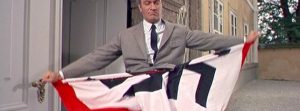 They make plans to flee that night before the performance, but are intercepted on the street. They must improvise and attend the performance together, singing onstage. The Captain sings Edelweiss again as a goodbye ballad to their home. They sneak out and hide in the church where the nuns come to their rescue. Liesl’s former beau alerts the other guards in a chilling moment of how Nazi loyalty turned people against each other.
They make plans to flee that night before the performance, but are intercepted on the street. They must improvise and attend the performance together, singing onstage. The Captain sings Edelweiss again as a goodbye ballad to their home. They sneak out and hide in the church where the nuns come to their rescue. Liesl’s former beau alerts the other guards in a chilling moment of how Nazi loyalty turned people against each other.
12. Hero after
They escape. The closing scene is of the Von Trapp family hiking together across the alpine landscape. It is a bookend from the opening scene. The hills are the same, but Maria and at the Von Trapps have changed. They have passed their final test and are leaving together as a family. 
Story Structure for The Very Hungry Caterpillar
As a third example in a completely different genre, here is the story structure for the children’s classic The Very Hungry Caterpillar. This was a book that my daughter loved from the time she was a baby, kicking her feet when she saw the pretty colors as I read it to her again and again. It was one of my favorites too for sheer enjoyment of reading. 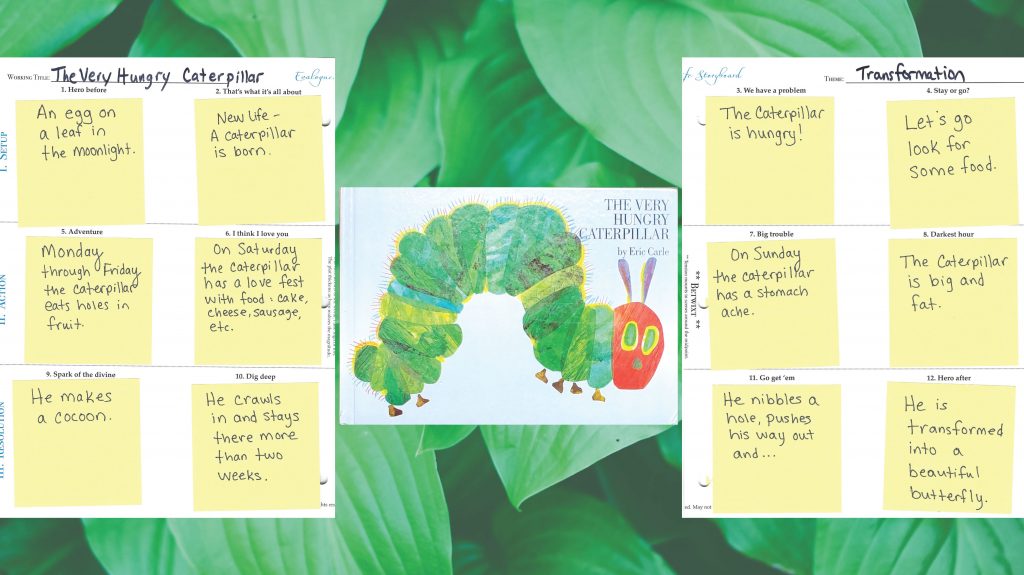 It struck me that although the colors are bright and beautiful it is more compelling than many because this very simple book tells an actual story. As a bit of a soapbox, I have noticed that many children’s books focus so much on learning that they forget the story part, and guess what? They are boring. Sure, the illustrations might be stunning and perhaps they teach ABCs. But do they hook children? Do they hook you?
It struck me that although the colors are bright and beautiful it is more compelling than many because this very simple book tells an actual story. As a bit of a soapbox, I have noticed that many children’s books focus so much on learning that they forget the story part, and guess what? They are boring. Sure, the illustrations might be stunning and perhaps they teach ABCs. But do they hook children? Do they hook you?
If you have a child in your life, try an experiment: Let the child choose a familiar book to read. Did the book the child picked tell a story or was it merely educational?
In short, there is a reason The Very Hungry Caterpillar is a classic; humans are wired for story from birth. This book delivers partly because it hits every single beat present in classic story structure. The story is complemented by beautiful illustrations, fun holes to poke fingers through, and the focus on delicious food. Notice how many senses it engages? This is another hallmark of good storytelling.
Theme
The theme of this book is simple: transformation. It is about completing a life cycle from egg, to caterpillar, to butterfly.
Act I. “Setup”
1. Hero before: The opening scene shows an egg on a leaf in the moonlight.
2. That’s what it’s all about: New life – a caterpillar is born.
3. We have a problem: The caterpillar is hungry!
4. Stay or go? Let’s go look for some food.
Act II. “Action”
5. Adventure: Monday through Friday the caterpillar eats holes in fruit.
6. I think I love you: On Saturday the caterpillar has a love fest with food: cake, cheese, sausages, etc.
7. Big trouble: On Sunday the caterpillar has a stomach ache.
8. Darkest hour. The caterpillar is big and fat.
Act III. Resolution
9. Spark of the divine: He makes a cocoon.
10. Dig deep: He crawls in and stays there more than two weeks.
11. Go get ‘em: He nibbles a hole, pushes his way out and…
12. Hero after: The caterpillar is transformed into a beautiful butterfly. Note how the opening and closing scenes are mirror-opposite bookends showing the caterpillar coming full circle from an egg to a butterfly.
One more example – story structure for a 90-second personal video:
Here is a very short personal video to watch:
And here is a quick tutorial wherein I break down the storyboard for this video:
More resources:
- Click here to learn about our classes.
- I also do one-on-one coaching/editing with writers. Click here to learn more about our services, including oral history and coaching.
- Here is an article that gives an overview of my favorite books on writing and story structure.
- Click here to contact me directly.
- Post questions and comments below. I will respond to all!
Printable Storyboard Template

Storyboard any book, memoir, biography, or family history tale with our free printable template. It just might save your story.
Rhonda Lauritzen is the founder and an author at Evalogue.Life – Tell Your Story. Rhonda lives to hear and write about people’s lives. She believes that when you tell your story, it changes the ending., She and her husband Milan restored an 1890 Victorian in Ogden. She especially enjoys unplugging in nature. Check out her books: How to Storyboard, and Every Essential Element. Most recently she was the writing coach of bestselling author, Rob A. Gentile, who wrote Quarks of Light, A Near-Death Experience: What I Saw That Opened My Heart



